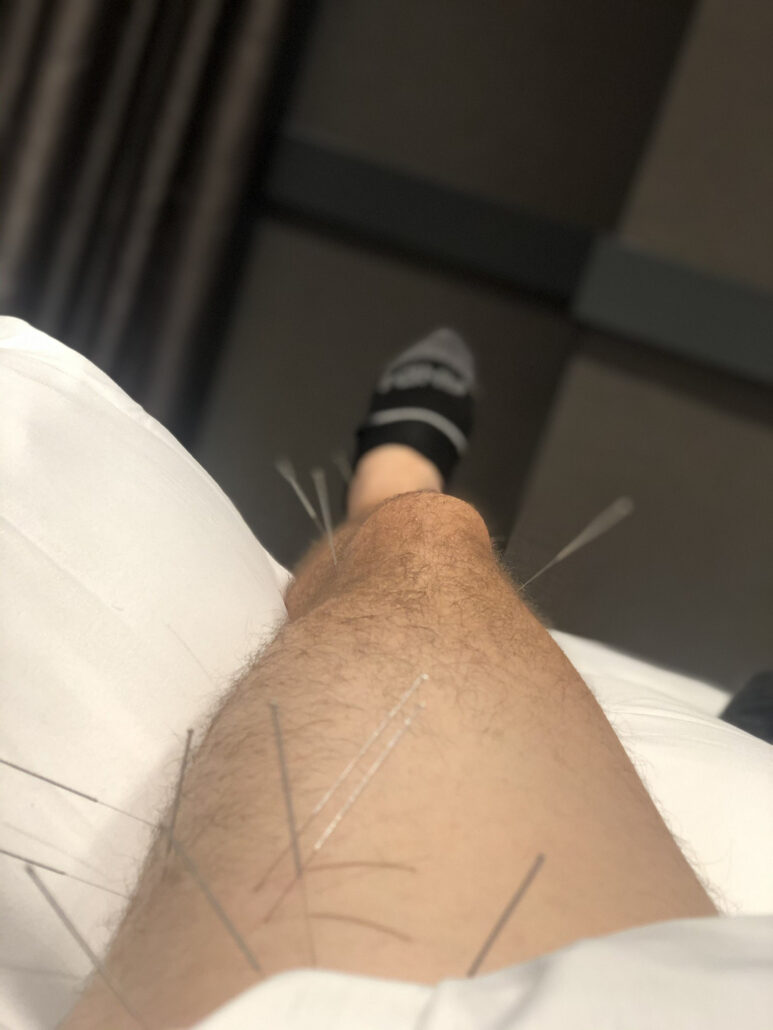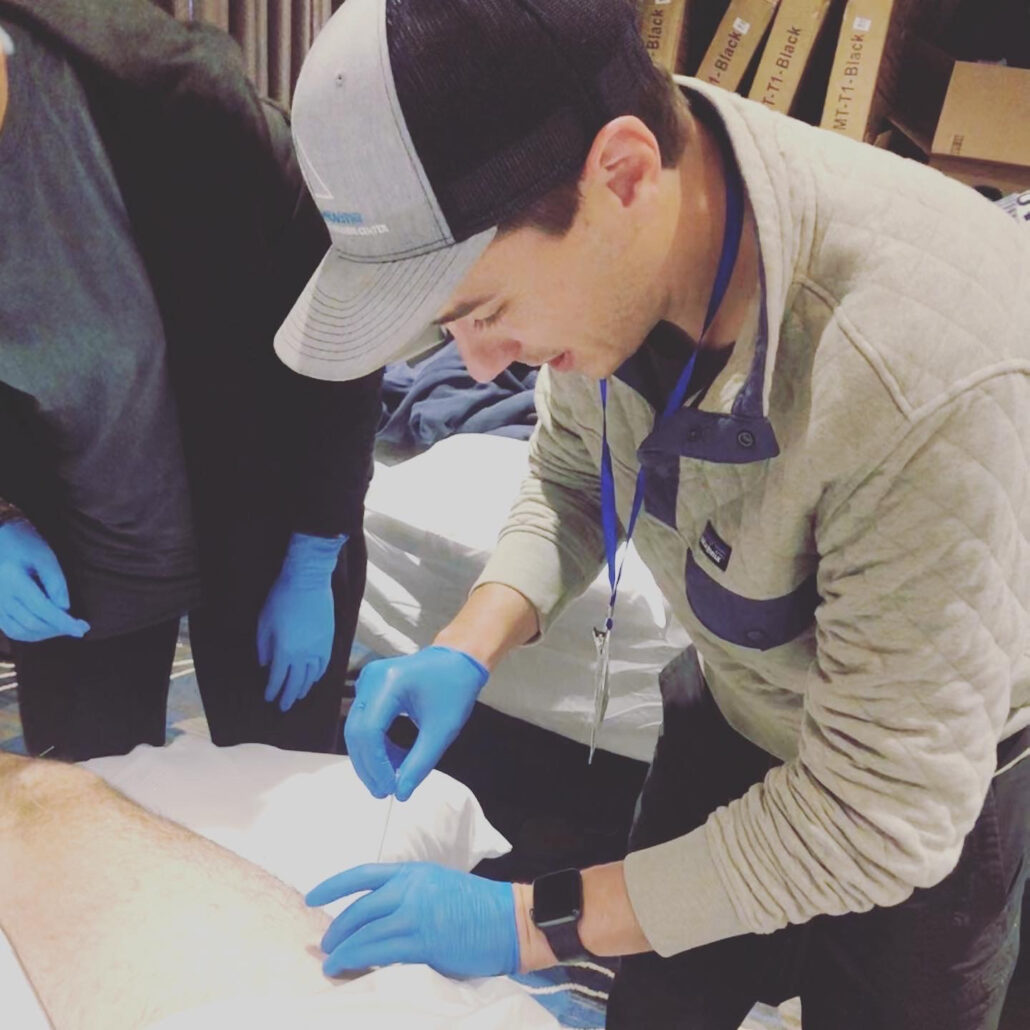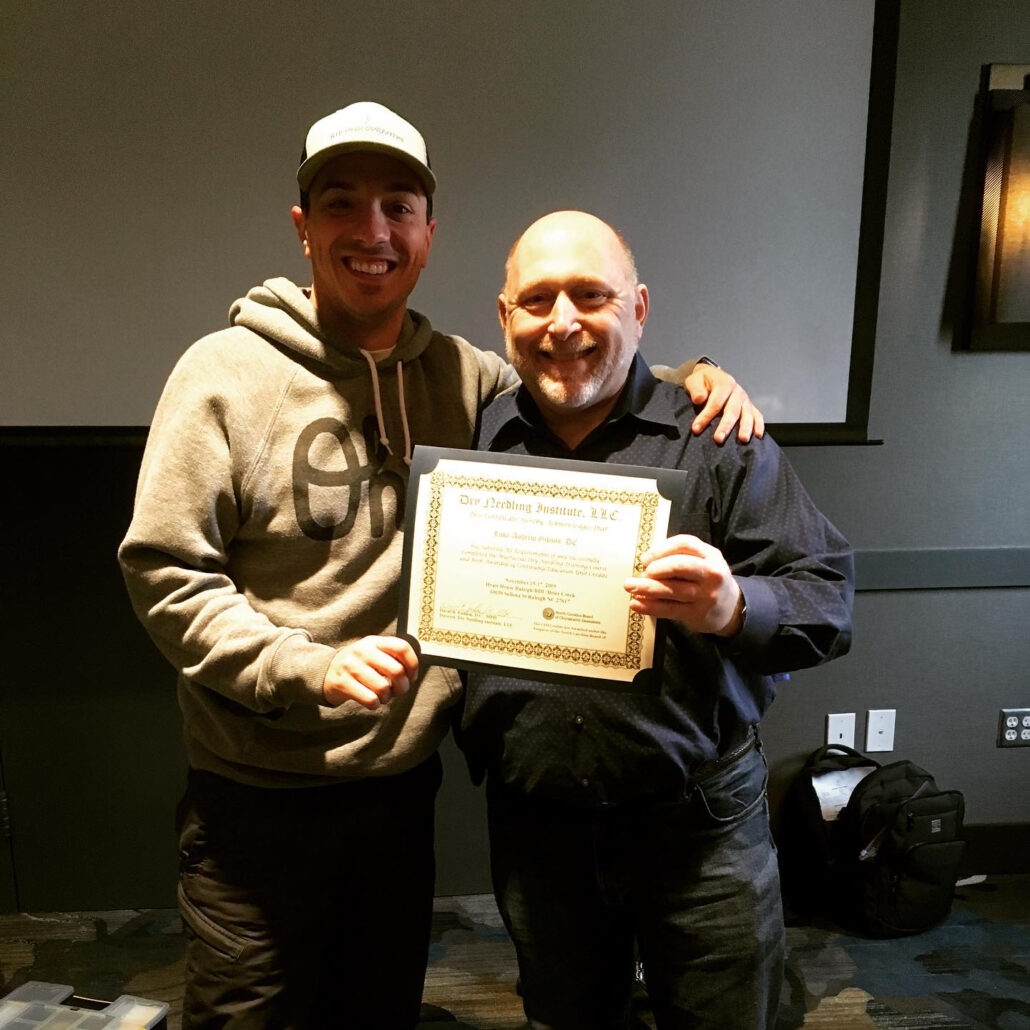Dry Needling
Dry needling, in it’s current application has been known about since the late 1970’s. Karel Lewit observed that inserting a hollow bore needle produced the same positive response as did injecting a patient with medicine. Around the same time Dr. Gunn was doing work with solid filament needles.
The goal of dry needling is to create homeostasis with in the system, just like with many other modalities. When a needle is inserted into a hypertonic or muscle that is in a spasm, it has been shown that the insertion of the needle will help inhibit or help relax the muscle. The needle is used to physically disrupt the tension and pressure within the involved area. By unlocking the tension within the tissue, it allows it to return to a more normal and improved level of function. The needles themselves are actually quite small, which allows for use on most areas on the body. Due to the fact that the needle is solid and not hollow, it does not pierce tissue like nerve, bone, or ligaments.

One of the biggest questions I get from patients is, what are the side effects? Like with any therapy or treatment, there are possibilities of the side effects. These can be limited by a certified practitioner that has a thorough understanding of human anatomy. One of the most common side effects with dry needling is soreness or bruising after treatment but typically resolves within a day or two. Unlike the technique most Physical Therapist utilize in practice, the needle once inserted, will not move until it is pulled out. Most PT’s are taught to stir the needle to create a twitch response. With our application at RTP Chiropractic, we are trying to calm the tissue down, and we do not stir the needle after it’s insertion.

The next question I typically receive from patients about dry needling is, how is it different from acupuncture? I will say, they are very similar but also very different. The biggest and I guess only similarity is the needle. The technique and approach is the biggest difference. Acupuncture is based off of eastern medicine and the needle is inserted based off of meridians, energy, and pulse points. Where as dry needling is very specific on the tissue that is contracted. If you lower back hurts, we needle the lower back.
The most import question is, can it help me? Most musculoskeletal conditions respond very well to dry needling. Some of the best results we have seen in our office are immediate improvement with muscle spasms, tendinitis, especially golfers elbow and tennis elbow. Patient with plantar fasciitis, entrapment syndromes like carpal tunnel, TMJ disorders, and migraine headaches. Patient with previous shoulder injuries have also responded very well to dry needling.
With the minimal risk and the excellent outcomes, patients are now requesting dry needling every time they come into our office. It’s a lot cheaper than other forms of treatment and most of the time, a lot more effective.

Dr. Gibson is one of the first Chiropractors in Morrisville and North Carolina that is board certified in Dry Needling. If you have more questions, please feel free to call our office today!










